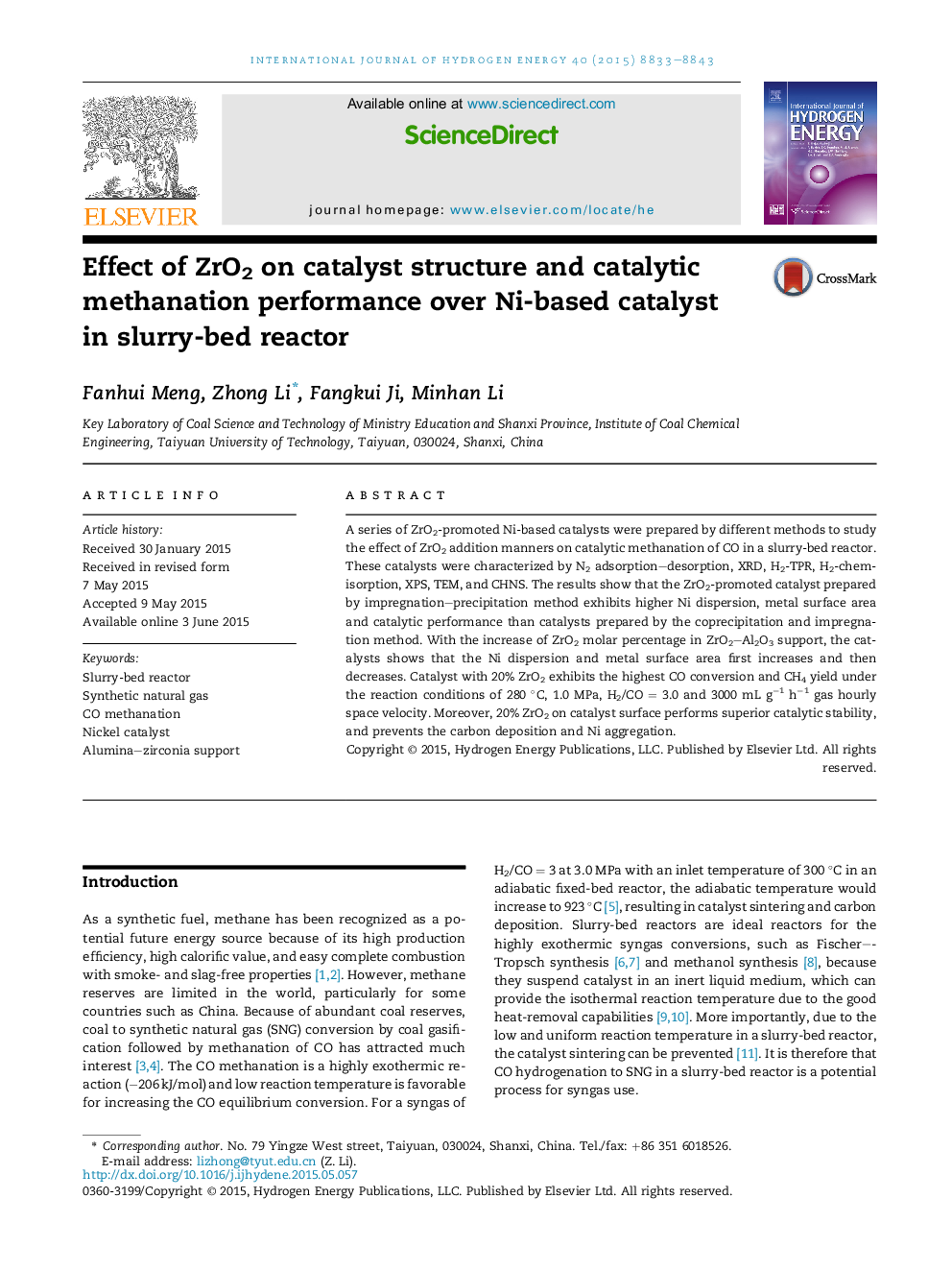| Article ID | Journal | Published Year | Pages | File Type |
|---|---|---|---|---|
| 1275123 | International Journal of Hydrogen Energy | 2015 | 11 Pages |
•Impregnation–precipitation is effective to introduce ZrO2 into Ni/Al2O3 catalyst.•Increasing ZrO2 content makes catalytic activity first increase and then decrease.•Certain content of ZrO2 enhances the metal surface area and Ni dispersion.•20% ZrO2 on catalyst surface prevents carbon deposition and Ni aggregation.
A series of ZrO2-promoted Ni-based catalysts were prepared by different methods to study the effect of ZrO2 addition manners on catalytic methanation of CO in a slurry-bed reactor. These catalysts were characterized by N2 adsorption–desorption, XRD, H2-TPR, H2-chemisorption, XPS, TEM, and CHNS. The results show that the ZrO2-promoted catalyst prepared by impregnation–precipitation method exhibits higher Ni dispersion, metal surface area and catalytic performance than catalysts prepared by the coprecipitation and impregnation method. With the increase of ZrO2 molar percentage in ZrO2–Al2O3 support, the catalysts shows that the Ni dispersion and metal surface area first increases and then decreases. Catalyst with 20% ZrO2 exhibits the highest CO conversion and CH4 yield under the reaction conditions of 280 °C, 1.0 MPa, H2/CO = 3.0 and 3000 mL g−1 h−1 gas hourly space velocity. Moreover, 20% ZrO2 on catalyst surface performs superior catalytic stability, and prevents the carbon deposition and Ni aggregation.
Graphical abstractNi/ZrO2 catalyst prepared by the impregnation–precipitation method (IP) encountered a fast deactivation after reaction for 240 h. Ni/Al2O3 catalyst deactivated gradually within 206 h and rapidly in the next 34 h. Ni/20ZrO2–Al2O3 catalyst with the molar content of 20% ZrO2 exhibited the highest catalytic activity and stability, which was due to that the ZrO2 on catalyst surface prevents the carbon deposition and Ni aggregation. Figure optionsDownload full-size imageDownload as PowerPoint slide
